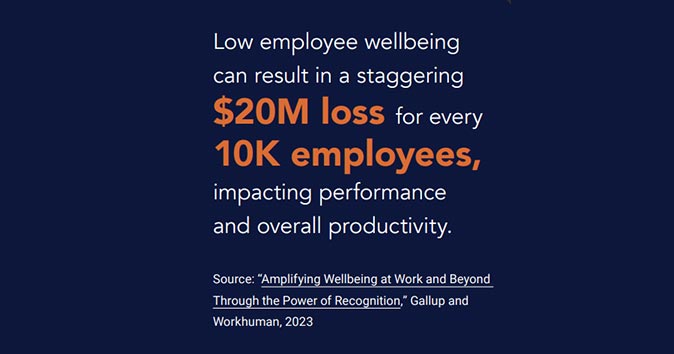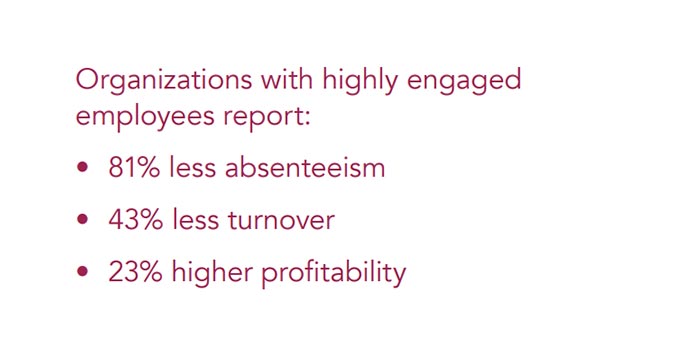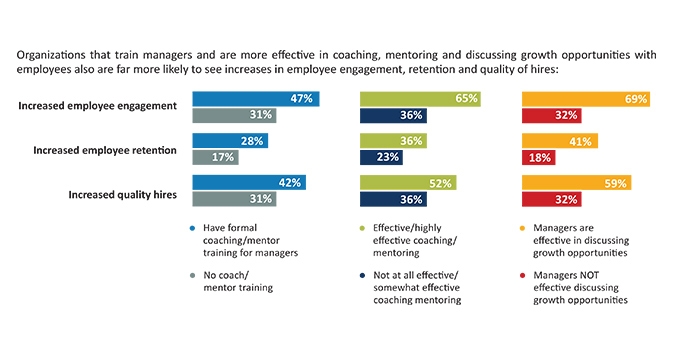Effective Corporate Mentorship Programs: Types & Benefits

If you're considering ways to improve your workplace culture, corporate mentorship programs might come to mind. The benefits of mentorship are vast, from fostering connections between employees to boosting engagement and improving employee wellbeing.
76% of people think mentors are important; however, only 37% of people currently have one (Olivet Nazarene University 2019). How can you fill this gap and create a workplace mentorship program that hits the mark and encourages employee participation? Learn more about corporate mentoring, how it works, and what it can do for your company with these tips.
What is corporate mentorship?
Corporate mentorship programs are internal initiatives that connect leaders and employees to share knowledge and foster growth. These programs can be highly structured with set systems and meetings, or they can be informally organized by the mentors and mentees themselves. A mentoring program in the workplace is meant to support both talent and a sense of camaraderie.
In this way, mentorship facilitates both personal and professional growth.
Corporate mentoring programs are different from sponsorships, which typically promote skills growth and advocate for career advancement. They are also different from traditional development programs, which focus solely on skills. Mentorship is interpersonal and doesn't necessarily have a concrete goal attached to it. That said, it can incorporate elements of sponsorships and training to promote an employee's growth and abilities.
A March 2022 survey of more than 8,000 working adults conducted by the Gallup Center on Black Voices found that mentors and sponsors are crucial to shaping the employee experience, particularly when they are implemented with care and intention. With such personal dynamics at place, mentorships can have a real impact and shape workplace culture.
What are the benefits of corporate mentorship programs?
Corporate mentorship is a type of professional development that provides both cultural and organizational benefits. Mentoring relationships offer a special kind of support to employees and make them feel like their company cares about their career longevity.
They can also strengthen bonds between employees and make everyone feel more connected to the organization, making for a more tight-knit team and increasing employee engagement and loyalty.
Learn how the Workhuman Platform can transform employee engagement in your organization.
Here are other advantages of mentorship programs:
- Professional and personal growth: At its core, mentoring is about advising and fostering the best in people. In order to succeed long-term, employees need nurturing and guidance. A good mentoring relationship can offer just that, providing advice, wisdom, and knowledge to help team members succeed and grow within the company.
- Sense of purpose: A mentoring relationship gives an employee's lifecycle some much-needed structure. A positive mentoring experience will include regular meetings and even "homework" between sessions, creating a trajectory for the mentee's growth and development.
- Meaningful relationships: Connection between employees makes for a stronger overall work culture. Trust is the foundation of a successful mentorship program, which helps foster trust throughout the organization at large. This dynamic can help an employee feel more supported and create a sense of synergy amongst the team.
- Improved employee wellbeing: Mentoring fosters employee growth and wellbeing, which makes for a happier team and better workplace culture. Employees with either a mentor or sponsor are more than twice as likely as those without to strongly agree that their organization provides a clear plan for their career development (Gallup 2023).

- Higher engagement: When employees feel fulfilled and supported at their workplace, they are more likely to be engaged. In fact, mentorship programs are a great employee engagement strategy, promoting interpersonal relationships and cultural participation beyond day-to-day work tasks.

- Shared knowledge and experience: First-hand experience is just as valuable as hard skills – and what better way to spread the knowledge than directly from senior leaders and those who have "been there?" Effective mentorship helps employees improve their skills and navigate the workplace more deftly through the mentor's experience and wisdom.
- A culture of learning:
Want to promote a culture of growth and learning? Mentorship is a great way to enforce that. Mentoring culture signals to employees that the company cares about their growth and values the time they spend learning as much as the time they spend on their daily output.
- Sense of belonging: Affinity mentoring can promote diversity in the workplace and make both mentors and mentees feel seen and supported. It can also facilitate greater connection for those who work from home.
- Recruitment tactic: Mentoring programs can be very attractive to potential employees. Your program could serve as a differentiator when it comes to recruitment. Many recruits view mentorship programs as evidence that an organization cares about their employees' growth and wellbeing and may prefer a company that provides such an opportunity.
With so many benefits, workplace mentorship clearly offers a lot of opportunities for any organization. While starting a mentorship program may seem daunting at first, it's clear it can have a significant payoff. If you're not certain whether traditional mentorship is right for your team, you can try a peer mentoring program or a different approach to see what yields the best results.

What are the different types of corporate mentorship programs?
Successful mentoring programs can take on many forms. There is no singular method for this perk to benefit your workplace and enhance your culture. Here are different types of mentorship programs at work.
Traditional one-on-one mentorship
This is the most common mentoring setup where two employees, typically one more senior and one more junior, meet one-on-one with some frequency. Their meetings might focus on challenges at work, ways to develop leadership skills or other relevant topics. In most cases, the senior employee will lead the sessions, and the junior employee will come with any questions or concerns they may have.
Peer mentoring
Peer mentors have the same seniority or title at work. This unique dynamic means they can both swap between being the mentor and the mentee, each offering advice in turn. This setup can be lower stress and can help encourage peer-to-peer leadership within the organization. It can also strengthen team bonds and make for better collaboration.
Leadership mentoring
One of the best ways to nurture talent is through mentoring. Leadership mentoring pairs employees with high potential with higher-level leaders to help coach and train the employees for future leadership. Eventually, the mentor can advocate for the mentee's promotion when the time is right.
Affinity or diversity mentoring
This mentoring dynamic pairs people of a similar background together to support each other through their shared experiences. This is a common DEI practice to support employees of color or LGBTQ+ employees. It offers a safe space for people to discuss their experiences, problem solve issues, and generally offer support.
Group or team mentorship
If two brains are better than one, then several brains are better than two! This type of mentoring program benefits from the hive mind, discussing topics as a group and sharing perspective with one another. Group mentorship can help create a sense of camaraderie and make employees feel supported by more of their peers.
Reverse mentorship
Mentorship often revolves around a more senior person guiding a more junior person, but this flips the script. With reverse mentoring, a new employee who brings a new skill or perpective to the company guides more experienced employees to learn that skill.
How can you create a corporate mentorship program for employees?
The key to a strong mentorship program is to align the program's objectives with your organizational goals. If the program is created without connecting it to the broader organization, it will feel discordant and might not yield as effective results. Here are some tips to get the most out of your new initiative:
Set clear objectives
When implementing a mentorship program, ensure its structure and objectives are clear to participants. Everyone should have clarity on what it is, why it's important, who can participate, and how it works. This will give employees insight into how the program fits into their broader work and schedules so that they know what to expect and can opt in more readily.
Use a structured approach
Workplace mentoring can be as simple as regular mentor meetings between two employees, but no matter what, the program needs a structure. When introducing the program, outline how it will work. Are you offering it as a perk? Is it part of an employee development plan? What is the minimum or maximum meeting frequency? How long should the sessions be?
You can give employees some agency, but they need some amount of structure in order for the program to be effective. If you don't create structural expectations, the meetings and content will be inconsistent and ineffective.
Thoughtful mentor-mentee pairing
You can also create a structure for how mentors and mentees are paired together. You can create guidelines for how to match people together, such as working in the same department or being separated by a certain degree of seniority or tenure. Pairing people with complementary skills and personalities tends to make the dynamic more effective and enjoyable for participants.
Provide training and resources
Set your mentors up for success by offering resources. If they've never mentored before, they might benefit from training or some resources like books, articles, or videos on the topic. These resources should align with your expectations for the mentors and the overall organizational values.
While conflict isn't necessarily common in mentorship relationships, it's not impossible. Equip mentors with tips and resources for resolving any issues that might arise constructively and efficiently.
Establish clear communication channels
How are mentees and mentors going to communicate? Who will initiate the connection? What is the expected frequency of communication? Will you use mentoring software? Again, you can leave it up to participants to decide this for themselves, but initial parameters will help them feel more comfortable and settle into the dynamic more easily.
What is an example of a mentorship program in the workplace?
There are different kinds of successful mentoring dynamics at work:
Individual mentoring is the most common dynamic, but it can take on different forms:
- Assigned “buddies” who help new hires get oriented over the first few weeks at the job
- Higher-level executives working with younger employees to learn the ways of the organization
- Peers working through issues together and encouraging each other's development
Group mentoring is another effective dynamic, which can include:
- A group of employees from another country working in their company's US office who meet to talk about the challenges they face adapting to a new country and its work style
- A group of women who share advice on career advancement and how to make an impact in male-dominant fields
- A group of LBGTQ+ individuals who share their experiences and tribulations
Conclusion
Corporate mentorship programs are a great way to support employees' growth, foster connection and engagement on your team, fuel business growth, and attract new talent. If your organization is lacking connection or needs a cultural boost, this kind of program can help do just that.
While creating a new initiative like this might be intimidating, with these tips and best practices, you can have more confidence in launching your new program.
About the author
Ryan Stoltz
Ryan is a search marketing manager and content strategist at Workhuman where he writes on the next evolution of the workplace. Outside of the workplace, he's a diehard 49ers fan, comedy junkie, and has trouble avoiding sweets on a nightly basis.